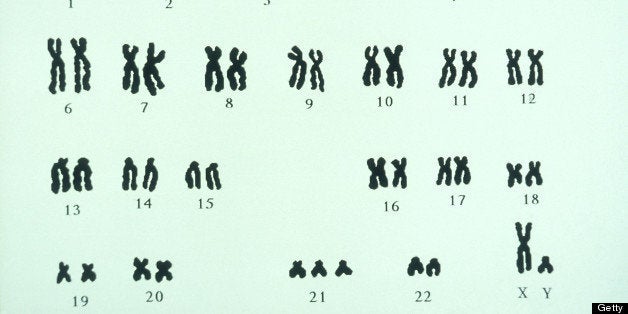
Scientists have shown for the first time in a lab setting that it's possible to "silence" the extra chromosome responsible for Down syndrome.
The findings are detailed in an article published in the journal Nature. Even though the University of Massachusetts Medical School researchers were only able to show this in a lab dish (in vitro) and they noted that much more research is needed, they said it's an important step toward identifying potential targets for therapies for the condition.
"This will accelerate our understanding of the cellular defects in Down's syndrome and whether they can be treated with certain drugs," study researcher Jeanne Lawrence, of the University of Massachusetts, told The Guardian. "The long-range possibility -- and it's an uncertain possibility -- is a chromosome therapy for Down's syndrome. But that is 10 years or more away. I don't want to get people's hopes up."
People without Down syndrome have 46 chromosomes in each cell (23 pairs of chromosomes), but people with Down syndrome have an extra copy of chromosome 21. In addition to affecting cognitive ability, this extra chromosome is linked with Alzheimer's, heart defects and dysfunctional immune and endocrine systems.
Researchers found that it was possible to silence the many genes on this extra chromosome by using an RNA gene called XIST, which typically silences one of two X chromosomes in female cells. They did this by using stem cells taken from fibroblast cells that were donated by someone with Down syndrome.
Researchers inserted this XIST gene into a precise location on the chromosome; doing so silenced the genes on this chromosome. Plus, researchers found that compared with Down syndrome cells that had not had the XIST gene inserted into them, those that did receive the XIST gene did not have cell proliferation defects that are characteristic of Down syndrome cells.
"It really is revolutionary, in terms of causing us all to rethink the one impossible thought -- can you make, functionally, that extra chromosome disappear," Dr. Brian Skotko, who is the co-director of the Down Syndrome Program at Massachusetts General Hospital and was not involved in the new study, told The Boston Globe. "I don’t think any of us thought it was possible or even within the current realm of scientific dreaming that we might one day be able to do it."
For more on the exact science behind the finding, click over to Scientific American's explainer.
According to the most recent statistics from the Centers for Disease Control and Prevention, Down syndrome prevalence has increased over the past 30 or so years, occurring in nine out of every 10,000 births in 1979 to 12 out of every 10,000 births in 2003. There is no cure for the condition, nor is there any one single treatment, but therapy -- physical, speech, behavioral and occupational -- can help.